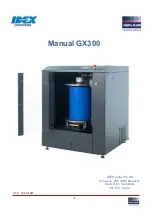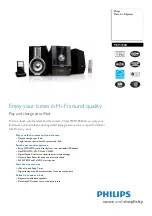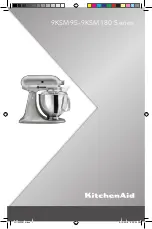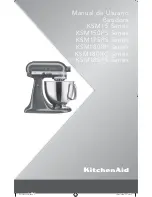
PA-CP
User Guide
9
Quick Start
1
Ensure your safety
First read and understand the Important Safety Instructions printed earlier.
Make sure that all your equipment is set for your local mains supply voltage and correctly grounded to
ensure your safety. Check that the console rear panel ON/OFF switch is in its out position (off). Plug in
the mains power using the power cord supplied with the console. Do not turn anything on until you
have checked your wiring and control settings. Also make sure the ventilation slots on the front and
rear are not obstructed in any way.
2
Set all controls to their starting position
Set the AMPLIFIER levels, channel FADERS, GAINS,
FB, AUX and FX sends, MONO OUT and 2TRK to LR level controls minimum (anti-clockwise). Set PAN
and all EQ controls centre. Set all switches up or out. Make sure the 48V switches next to the MIC
inputs are in the up position. Check that the recessed panel switches are up (flush with the panel).
Use a pen or pointed object to operate these. Starting with the controls set in this way prevents any
unexpected surprises when you switch the system on.
3
Configure the system
Decide how you wish to use the amplifiers. Set the AMP A and B source
switches for stereo, mono + monitor, or 2x monitor operation. These switches are recessed to avoid
accidental operation once set. A good starting point is the default stereo operation (both switches up).
4
Connect the loudspeakers
Check that the loudspeaker cables are correctly connected at the
speaker end. Plug your speakers into the rear panel A and B Speakon™ connectors. Push the plugs
into the sockets and twist them into their locked position. Use 4 ohm or 8 ohm speakers. Do not use
bridged operation. Set the rear panel CONSTANT POWER slide switch to the correct position for the
speakers used.
5
Plug in a music source
Plug a CD player or similar test source into the ST3 inputs on the last
stereo channel. Check that the recessed switch below its GAIN control is flush with the panel. This
routes the ST3 input to the stereo channel.
6
Turn the system on
Press the ON/OFF switch to apply power to the console. The front panel
blue power LED lights and you should hear the speaker relays click in after one or two seconds. You
may also hear air movement as the internal fans start up. The meters and several other LED indicators
may pulse as the power rails stabilise. This is quite normal.
7
Adjust the levels and route the signal to the outputs
Press the stereo channel PFL button.
Adjust the ST3 GAIN control until the main meters read around ‘0’. Release PFL and raise the channel
and LR faders to their ‘0’ positions. Next, gradually raise the AMP A and B LEV trim controls. You
should hear the music in the speakers. With the meters averaging ‘0’ to ‘+6’ adjust the amplifier LEV
trimmers for the loudest volume you expect from the system. That gets the gain structure about right.
8
Experiment with the system
Use the music source to experiment with the EQ and internal
effects. Plug a microphone into one of the mono channels. Make sure the channel is muted when you
plug or unplug microphones, or when you switch 48V phantom power on or off. To find out more
about each control continue to read through the rest of this guide. HAPPY MIXING !
Important Note about Hearing :
To avoid damage to your
hearing do not operate any sound system at excessively high volume. This
also applies to any close-to-ear monitoring such as headphones and IEM.
Continued exposure to high volume sound can cause frequency selective or
wide range hearing loss.
!
1
4
6










































